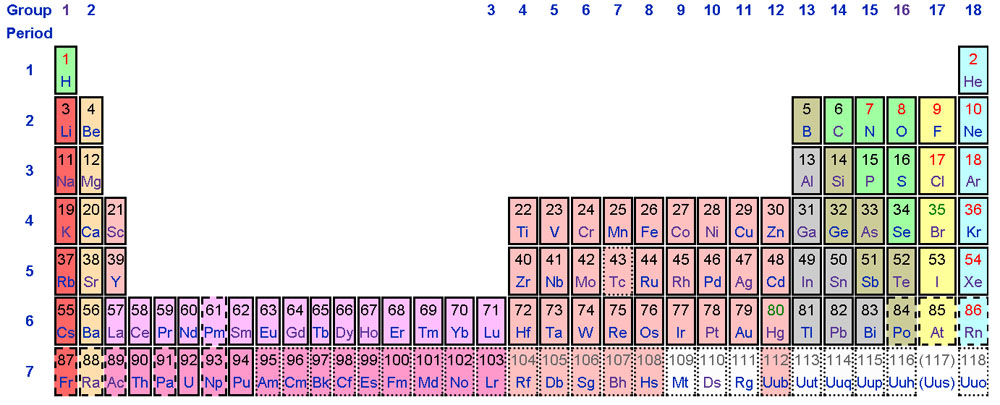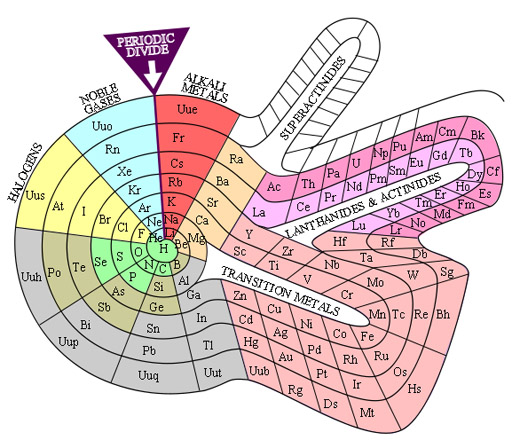Classifying: Calm the
Chaos Quiz
A History of the Periodic Table
A History of the Periodic Table

Water is the Only Element:
Around 600 B.C., the Greek philosopher, Thales, proposed that all things are made from water. Water was disproved as being an element because it was decomposed using electricity (electrolysis) and became two different gases. Problem 1: What are those gases?
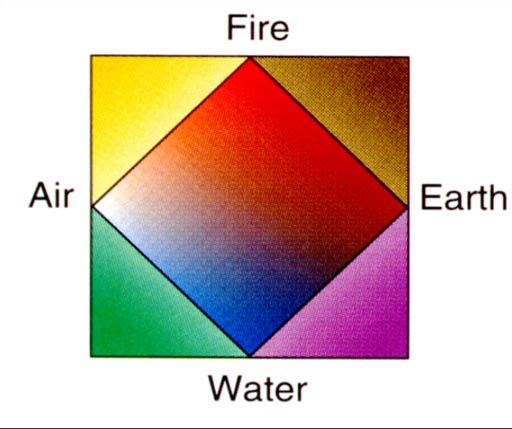
Four Elements:
Around 440 BC Empedocles suggested that there were four elements: Water, Earth, Air, and Fire. It seemed logical because when things caught fire moisture is released, hot air can be felt coming up from it, and the remaining ashes show the earth that it contained. Lavoiser showed that air was not an element because he found two different gases in it. One would support life and the other would kill life. He called the one that killed life "Azote". "Zo" is from the same word as zoo meaning a "living being". The "A" in front means "Not". Problem 2: What is the current name for azote?
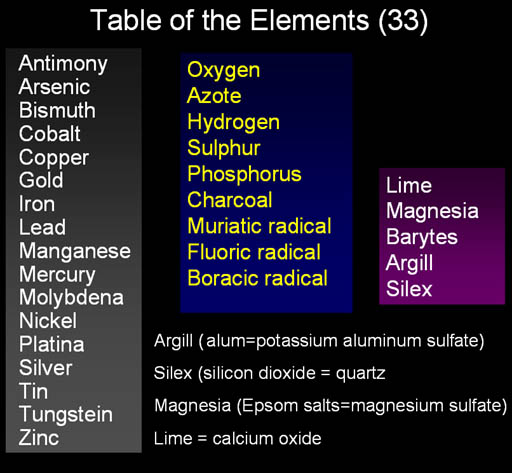
These were the agreed upon elements at the time of Lavoisier (around 1776). The word "radical" actually was an ion in solution. Problem 3: What element is the muriatic radical (ion)?

Terminology: A molecule is two or more atoms bonded together. They can be different atoms or the same kind of atoms. A compound, however, is made of two or more different atoms. In other words, a compound must consist of two or more different elements. Problem 4: If the red spheres represent oxygen atoms, and the small white spheres are hydrogen atoms, what is the compound that has two of each?
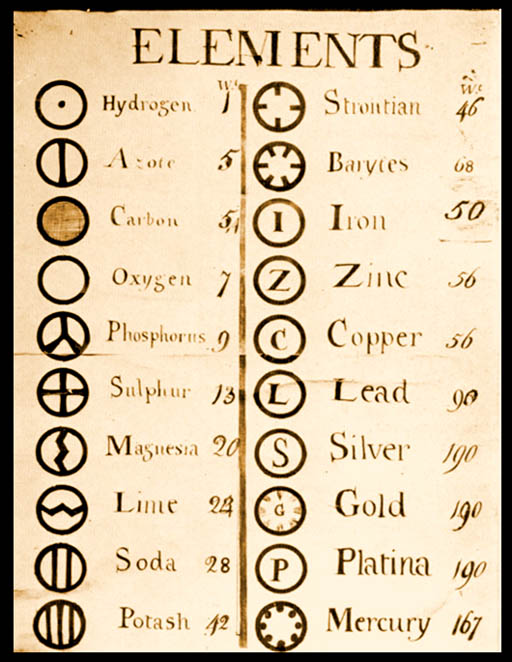
At the time of Dalton, these were the elements and the symbols that was used to represent them. Some symbols were from the alchemists. This list can't be called a "Periodic Table" because it doesn't show any repeating (periodic) grouping. Elements were just listed by weight. Problem 5: What are current names of the elements, Potash and Platina?
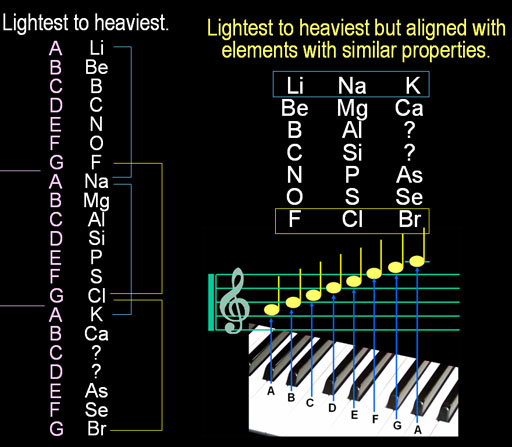
This is the earliest Periodic Table, which was proposed by John Newlands. There are two spots that have a question mark "?". Problem 6:What are the two elements that were later discovered that go in those missing slots?
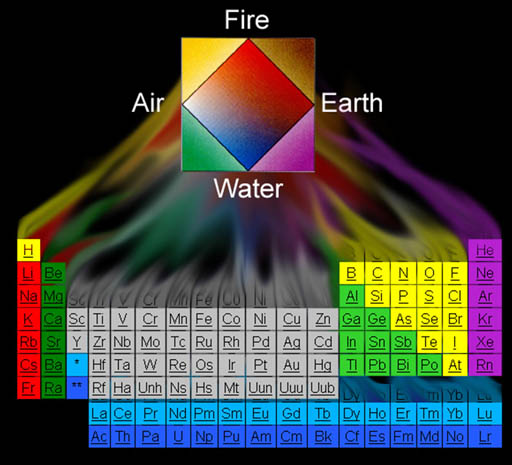
None of the first 4 "elements" actually turned out to be elements. Problem 7: When we see a campfire, what elements are present in the fire (list at least 3)?
Problem 8: What compounds are present in the fire (list at least 2)?
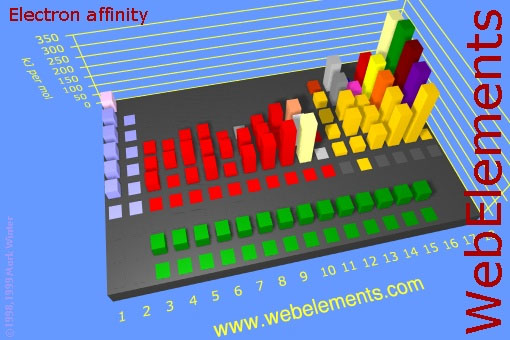
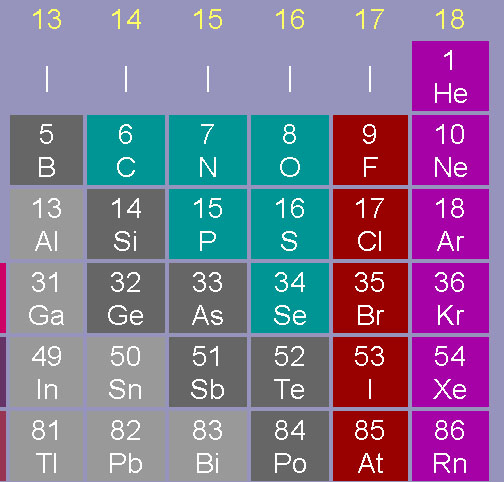
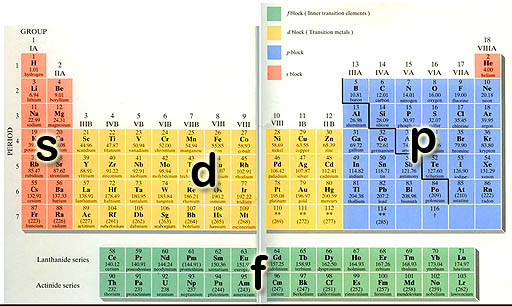
To the left is the normal layout of the Periodic Table. Here I labeled each block with the outer orbital that these elements have. Notice that the elements that begin filling the "f" orbital is placed in two separate rows. They call these metals the "inner transition metals". The top row is called the Lanthanide series because these elements follow Lanthanum (57). The bottom row is called the Actinide series because they follow Actinium (89). Problem 11: Across the top of the below Periodic Table are the group numbers 1 to 18, however, with these 2 rows now embedded, that number should be higher because there are more groups (more columns). How many groups are there in the extended Periodic Table?
